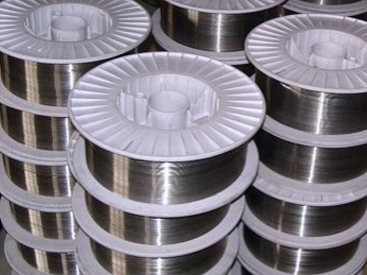MIG welding and flux-cored welding have different characteristics that must be evaluated by the welder when selecting a process for the welding application. For best results, consider the following factors: material thickness, proper shielding gas, wire feed speed and voltage settings, site location, and weld seam appearance.
There is no one-size-fits-all welding solution, and all of the above variables can influence a welder's decision to use solid wire or flux-cored wire. This article will help the novice or casual welders (such as farmers, ranchers, motorsports enthusiasts, and home enthusiasts) with questions to consider when choosing solid or flux-cored wire and how to maximize the benefits of each.
Appearance
Many welders consider the appearance of the weld to be an important factor. When working with materials less than 3/16 inch thick up to thin sheet metal (24 gauge), the solid wire will produce a clean-looking weld. For example, short-circuit transfer using 0.030-inch solid wire set at 18-19 volts and 160-170 amps and using 75 percent argon and 25 percent carbon dioxide shielding gas typically produces little spatter, generates less heat - in the affected area, and reduces the chance of burn-through. As a result, many automotive enthusiasts specializing in bodywork or working on thinner applications prefer to use solid wire in their operations.
Location
When choosing between the solid wire and flux-cored wire, the welder must also consider the location of the job site. In environments such as windy sites, solid wire or gas shielded flux cored wire is more difficult to use because exposing the shielding gas to the wind can compromise weld integrity. Often, the loss of shielding gas creates visible porosity in the welding channel.

On the other hand, self-shielding flux-cored wire is ideal for welding outdoors or in windy conditions. The welder does not have to set up a windshield to protect the shielding gas from being blown away because the shielding gas is produced by the burning flux. Because self-protecting flux-cored wire does not require external shielding gas, it is also more portable than solid wire. This portability is great for agricultural applications where field equipment may fail far from the store. If you are welding thicker metals (16 gauge and above), the self-shielding flux-cored wire can also provide excellent depth of melt.
Thickness, Application Type, and Parameter Settings
Many novice welders try to use a one-size-fits-all wire and shielding gas combination for multiple applications. The most common wire and gas combination (solid wire) is a 0.035-inch diameter wire using 75% argon and 25% CO2 shielding gas. However, when welding thicker materials, the output of the welding power source as well as the wire diameter needs to be considered. If a 0.035-inch wire is selected for thicker materials and the power source is a power source plugged into a 115-volt circuit, the resulting amperage output may not be sufficient for a quality weld. This increases the risk of cold loops or lack of fusion.
Attempting to use too small a solid wire for thicker applications (such as on an automotive A-frame) increases the chance of poor root penetration and may require more than one pass of welding. The misuse of solid wire (even if strong enough) may not provide sufficient penetration on thicker materials.
.jpg)
Although flux-cored wire is more expensive than solid wire, it can help you increase productivity. Flux-cored wire can often handle welding dirtier materials that may have higher levels of rust, oxide, or oil. While cleanliness is always the proper way to prepare steel, flux-cored wire contains deoxidizing elements that trap these contaminants in the weld pool and keep them within the slag coverage, often preventing the welding problems found associated with welding dirtier steel. Flux-cored wire also provides increased sidewall penetration and the advantage of better deposition rates (the amount of weld metal deposited in a given time period, measured in pounds per hour) compared to solid wire. Although welders initially spend more on flux-cored wire material, the
Which is better, solid wire or flux-cored wire?
Neither wire is better than the other. They simply have different properties that work better in certain applications. In terms of performance, when applied correctly and used within the proper parameter settings, both types of wire produce good welds with a good bead appearance. Solid wire provides deep penetration at the root and is usually virtually free of spatter. Flux-cored wire has a larger spherical transfer and produces low spatter levels. In addition, flux-cored wire produces a more rounded penetration profile and has excellent sidewall fusion.
In terms of user appeal, both solid wire and flux-cored wire are relatively easy to use and ideal for novice and temporary welders working in automotive, agricultural, and home hobby applications. In thinner applications, the welder's appeal may be better on the solid wire because no slag removal is required, it can be painted, and the weld may be more aesthetically pleasing.
Conclusion
The most important thing to remember is not to fall into a one-size-fits-all mentality. Solid wire, self-protecting flux-cored wire, and gas-protected flux-cored wire will all work fine - as long as they are applied correctly. The type of wire you choose will depend on the location of the site, the thickness of the application, the proper shielding gas combination, and the type of equipment available. Workpieces should always be cleaned before welding to ensure optimum weld quality and to prevent impurities from becoming trapped in the welding channel. For best results, be willing to adjust for site variables and consider offering both solid and flux-cored wire.
For more information about the difference between solid wire and flux-cored wire, welcome to contact us at +86-311-85022601 or write to us at info@sino-welding.com. We will be happy to help you out!





.jpg)




